Selection and identification of superior banana phenotypes from Turkey
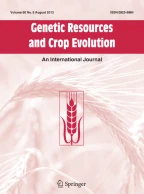
New banana plantations of Turkey are mostly established with meristem culture-propagated plants because starting materials greatly influence yield and quality in these plantations. This study was conducted to select superior banana clones from Grand Nain, Dwarf Cavendish and Azman cultivars grown in open fields and greenhouses in Turkey. The study also aimed to determine selection efficiency breeding for stem height, number of hands, the number of fruits, bunch weight, fruit weight and fruit length. The selected genotypes exhibited a large variation in yield and related quantitative traits. The genotypes showing the highest yield and quality traits were selected. Although the traits used for selection contributed to selection efficiency, stem height had the greatest contribution. The superior banana clones were found to be stable and could reliably be used in establishment of new banana plantations to increase yield and quality in subtropical conditions in Mediterranean region in Turkey.
This is a preview of subscription content, log in via an institution to check access.
Access this article
Subscribe and save
Springer+ Basic
€32.70 /Month
- Get 10 units per month
- Download Article/Chapter or eBook
- 1 Unit = 1 Article or 1 Chapter
- Cancel anytime
Buy Now
Price includes VAT (France)
Instant access to the full article PDF.
Rent this article via DeepDyve
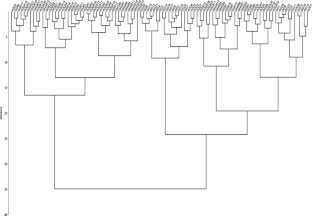
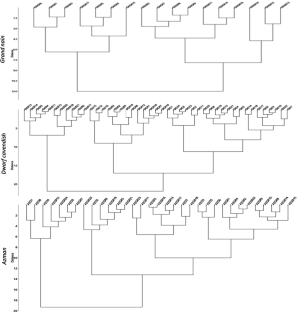
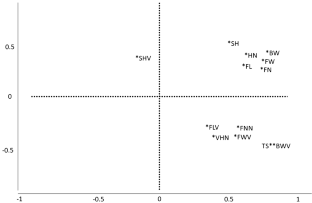
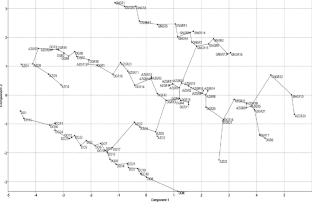
Similar content being viewed by others

Preliminary Investigations on Identification and Evaluation of Early and Dwarf Lines of Ney Poovan Banana (Musa AB) for Commercial Scale Utilization
Article 21 March 2015
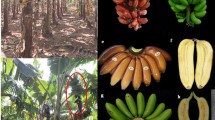
Molecular characterization of Red banana and its somaclonal variant: a comprehensive study
Article 19 December 2023
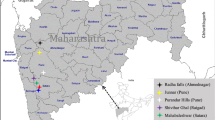
Morphological characterization, propagation and identification of Boucerosia frerei (G.D.Rowley) Meve & Liede accessions for its introduction in hanging basket: an attractive succulent with star-shaped flowers from the Northern Western Ghats of India
Article 23 December 2022
References
- Ara N, Basher MK, Hossain MF (2011) Growth, yıeld and qualıty of banana (Musa sapıentum) influenced by different banana varieties/lines and planting time. Trop Agric Res Ext 14:45–51 ArticleGoogle Scholar
- Bairu MW, Fennell CW, van Staden J (2006) The effect of plant growth regulators on somaclonal variation in Cavendish banana (Musa AAA cv. ‘Zelig’). Sci Hortic 108(4):347–351 ArticleCASGoogle Scholar
- Batte M, Swennen R, Uwimana B, Akech V, Brown A, Tumuhimbise R, Persson Hovmalm H, Geleta M, Ortiz R (2019) Crossbreeding east African highland bananas: lessons learnt relevant to the botany of the crop after 21 years of genetic enhancement. Front Plant Sci 10:81 ArticleGoogle Scholar
- Donini P, Sonnino A (1998) Induced mutation in plant breeding: Current status and future outlook. In: Jain SM, Brar DS, Ahloowalia BS (eds) Somaclonal variation and induced mutations in crop improvement, pp 255–291
- Eckstein K, Fraser C, Husselmann J, Temple-Murray N (1998) The evaluation of promising new banana cultivars. Acta Hortic 490:57–69 ArticleGoogle Scholar
- Ercisli S, Akbulut M, Ozdemir O, Sengul M, Orhan E (2008) Phenolic and antioxidant diversity among persimmon (Diospyrus kaki L.) genotypes in Turkey. Int J Food Sci Nutr 59(6):477–482 ArticleCASGoogle Scholar
- FAO (2018) https://www.fao.org/faostat/en/#data/QC
- Garcia LR, Perez PJ, Bermudez IC, Orellana PP, Veitia NR, Pardon YM, Romero CQ (2002) Comparative study of variability produced by induced mutation and tissue culture in banana (Musa sp.) cv. ‘Grande Naine’. Infomusa 11(2):4–7 Google Scholar
- Gecer MK, Kan T, Gundogdu M, Ercisli S, Ilhan G, Sagbas HI (2020) Physicochemical characteristics of wild and cultivated apricots (Prunus armeniaca L.) from Aras valley in Turkey. Genet Resour Crop Evol 67:935–945 ArticleCASGoogle Scholar
- Gübbük H, Pekmezci M, Onus AN, Erkan M (2004) Identification and selection of superior banana phenotypes in the cultivar Dwarf Cavendish using agronomic characteristics and RAPD Markers. Pak J Bot 36(2):331–342 Google Scholar
- Hanci F, Gökçe AF (2016) Molecular characterization of Turkish onion germplasm using SSR markers. Czech J Genet Plant Breed 52(2):71–76 ArticleGoogle Scholar
- Heslop-Harrison JS (2011) Genomics, banana breeding and super domestication. Acta Hortic 897:55–62 ArticleGoogle Scholar
- Hoque MA, Salim MMR (2007) Evaluation of exotic banana germplasm. Bangladesh J Agric Res 32(1):53–60 Google Scholar
- Khayat E, Duvdevani A, Shchukin A, Lahav E (1998) Banana improvement program at Rahan Meristem. Acta Hortic 490:71–78 ArticleGoogle Scholar
- Leilah AA, Al-Khateeb SA (2005) Statistical analysis of wheat yield under drought conditions. J Arid Environ 61(3):483–496 ArticleGoogle Scholar
- Lima MB, Silva SO, Jesus ON, Oliveira WSJ, Azevedo RL (2005) Evaluation of banana cultivars and hybrids in the Recôncavo. Sci Agrotechnol 29:515–520 Google Scholar
- Mattos LA, Amorim EP, Cohen KO, Amorim TB, Silva SO (2010) Agronomic, physical and chemical characterization of banana fruits. Crop Breed Appl Biotechnol 10(3):225–231 ArticleGoogle Scholar
- Nwauzoma AB, Tenkouano A, Crouch JH, Pillay M, Vuylsteke D, Kalio LA (2002) Yield and disease resistance of plantain (Musa spp., AAB group) somaclones in Nigeria. Euphytica 123:323–331 ArticleGoogle Scholar
- Nyine M, Uwimana B, Swennen R, Batte M, Brown A, Christelova P, Hribova E, Lorenzen J, Dolezel J (2017) Trait variation and genetic diversity in a banana genomic selection training population. PLoS ONE 12(6):e0178734 ArticleGoogle Scholar
- Olgun M, Partigöç F, Yıldırım T, Ruşen M, Küçüközdemir Ü (1999) The use of weighted method in wheat breeding in Erzurum conditions. In: Proceedings of problems and solutions of agriculture in inner Anatolia
- Ortiz R (2013) Conventional banana and plantain breeding. Acta Horticulturae 986:177 ArticleGoogle Scholar
- Pekmezci M, Gübbük H, Erkan M (1998) Investigation on growing possibilities of banana in Turkey. Acta Hortic 490:599–603 ArticleGoogle Scholar
- Perrier XD, De Langhe E, Donohue M, Lentfer C, Vrydaghs L, Bakry F (2011) Multidisciplinary perspectives on banana (Musa spp.) domestication. Proc Natl Acad Sci 108:11311 ArticleCASGoogle Scholar
- Pinar H, Bircan M, Turkay C, Unlu M, Aras V, Yilmaz C (2011) Seasonal changes of some nutrition elements in banana ('Dwarf Cavendish') leaves in Turkey
- Pinar H, Uzun A, Unlu M, Bircan M, Gulsen O, Yilmaz C, Gubbuk H (2015) Identification of banana accessions sampled from subtropical region of Turkey using SRAP markers. Bulg J Agric Sci 21(2):270–276 Google Scholar
- Pushkaran K, Rajeevan PK, Krishnan Nair N, Varkey PA, Babylatha AK, Prasannakumariamma S (1991) Intraclonal variation in ‘Nedran’ banana. Banan Newslett 13:4–6 Google Scholar
- Şanal T, Olgun M, Kumlay AM (2008) The modelling of some quality components in evaluation of wheat quality. In: Bosphorus 2008 ICC internaitonal conference, pp 24–26 April 2008
- Senica M, Stampar F, Mikulic-Petkovsek M (2019) Different extraction processes affect the metabolites in blue honeysuckle (Lonicera caerulea L. subsp. edulis) food products. Turk J Agric For 43:576–585 ArticleCASGoogle Scholar
- Silva SO, Passos AR, Donato SLR, Salomão LCC, Pereira LV, Rodrigues MGV, Lima Neto FP, Lima MB (2003) Avaliação de genótipos de bananeira em diferentes ambientes. Ciência Agrotecnologia 27:737–748 ArticleGoogle Scholar
- Smith MK, Drew RA (1990) Growth and yield characteristics of dwarf off-types recovered from tissue-cultured bananas. Aust J Exp Agric 30(4):575–578 ArticleGoogle Scholar
- Smith M, Wiley A, Searle C, Langdon P, Schaffer B, Pegg K (1998) Micropropagated bananas are more susceptible to Fusarium wilt than plants grown from conventional material. Aust J Agric Res 49:1133–1139 ArticleGoogle Scholar
- Vuylsteke D, Ortiz R (1996) Field performance of conventional vs. in vitro propagated propagules of plantain (Musa spp., AAB group). HortScience 31:862–865 ArticleGoogle Scholar
- Vuylsteke DR, Ortiz R, Ferris SB, Crouch JH (1997) Plantain improvement. Plant Breed Rev 14(267):320 Google Scholar
- Zia-Ul-Haq M, Ahmad S, Bukhari SA, Amarowicz R, Ercisli S, Jaafar HZE (2014) Compositional studies and biological activities of some mash bean (Vigna mungo (L.) Hepper) cultivars commonly consumed in Pakistan. Biol Res 47:23 ArticleGoogle Scholar
Funding
This work was supported by the Republic of Turkey Ministry of Agriculture and Forestry. General Directorate of Agricultural Research and Policies.
Author information
Authors and Affiliations
- Agriculture Faculty, Department of Horticulture, Erciyes University, Kayseri, Turkey Hasan Pinar, Mustafa Unlu & Fatih Hanci
- Alata Horticultural Research Institute, 33740, Erdemli, Mersin, Turkey Mustafa Bircan, Cengiz Turkay & Aydin Uzun
- Agriculture Faculty, Department of Horticulture, Ataturk University, Erzurum, Turkey Sezai Ercisli
- Hasan Pinar








